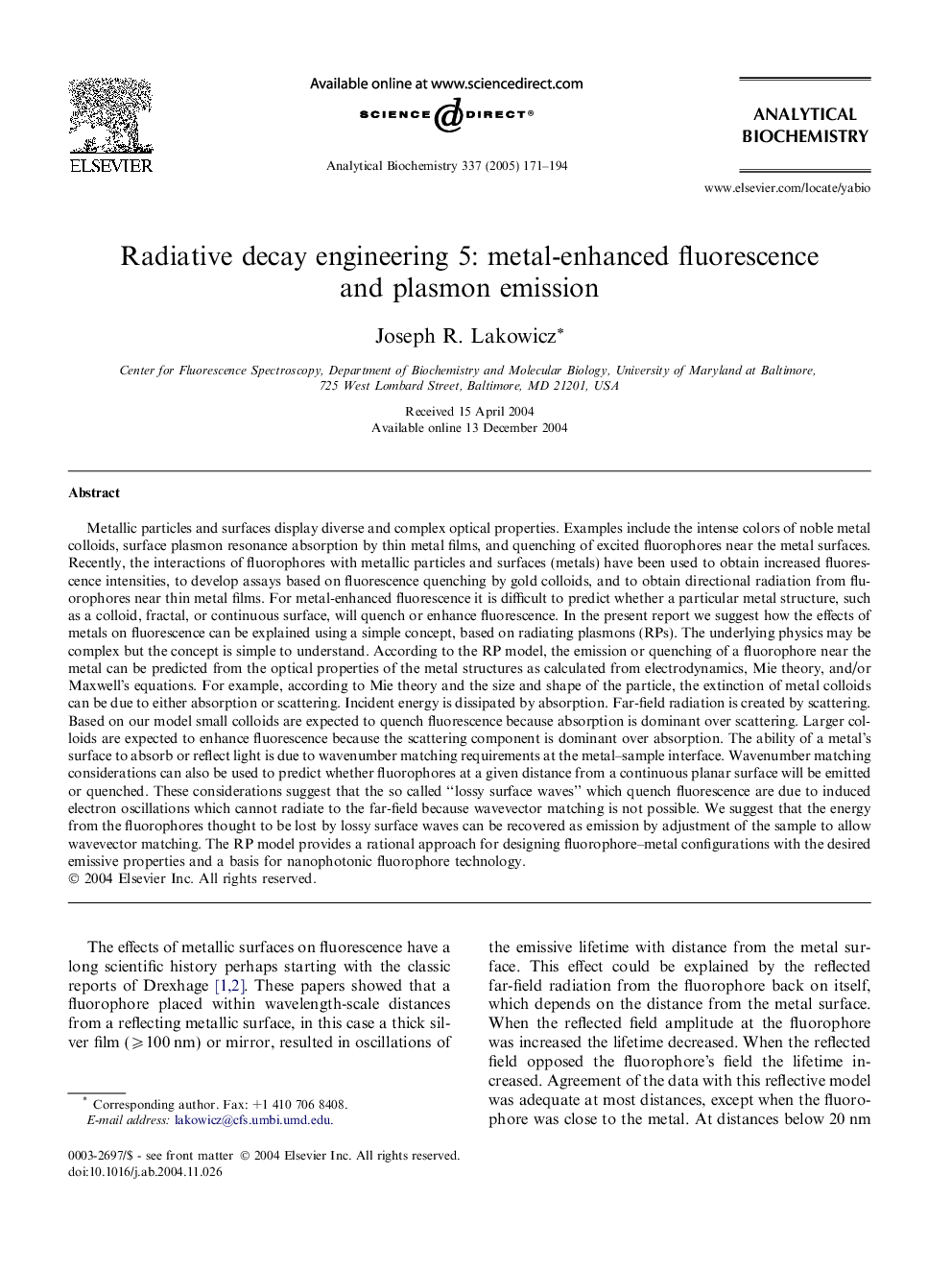| Article ID | Journal | Published Year | Pages | File Type |
|---|---|---|---|---|
| 10534223 | Analytical Biochemistry | 2005 | 24 Pages |
Abstract
Metallic particles and surfaces display diverse and complex optical properties. Examples include the intense colors of noble metal colloids, surface plasmon resonance absorption by thin metal films, and quenching of excited fluorophores near the metal surfaces. Recently, the interactions of fluorophores with metallic particles and surfaces (metals) have been used to obtain increased fluorescence intensities, to develop assays based on fluorescence quenching by gold colloids, and to obtain directional radiation from fluorophores near thin metal films. For metal-enhanced fluorescence it is difficult to predict whether a particular metal structure, such as a colloid, fractal, or continuous surface, will quench or enhance fluorescence. In the present report we suggest how the effects of metals on fluorescence can be explained using a simple concept, based on radiating plasmons (RPs). The underlying physics may be complex but the concept is simple to understand. According to the RP model, the emission or quenching of a fluorophore near the metal can be predicted from the optical properties of the metal structures as calculated from electrodynamics, Mie theory, and/or Maxwell's equations. For example, according to Mie theory and the size and shape of the particle, the extinction of metal colloids can be due to either absorption or scattering. Incident energy is dissipated by absorption. Far-field radiation is created by scattering. Based on our model small colloids are expected to quench fluorescence because absorption is dominant over scattering. Larger colloids are expected to enhance fluorescence because the scattering component is dominant over absorption. The ability of a metal's surface to absorb or reflect light is due to wavenumber matching requirements at the metal-sample interface. Wavenumber matching considerations can also be used to predict whether fluorophores at a given distance from a continuous planar surface will be emitted or quenched. These considerations suggest that the so called “lossy surface waves” which quench fluorescence are due to induced electron oscillations which cannot radiate to the far-field because wavevector matching is not possible. We suggest that the energy from the fluorophores thought to be lost by lossy surface waves can be recovered as emission by adjustment of the sample to allow wavevector matching. The RP model provides a rational approach for designing fluorophore-metal configurations with the desired emissive properties and a basis for nanophotonic fluorophore technology.
Related Topics
Physical Sciences and Engineering
Chemistry
Analytical Chemistry
Authors
Joseph R. Lakowicz,
